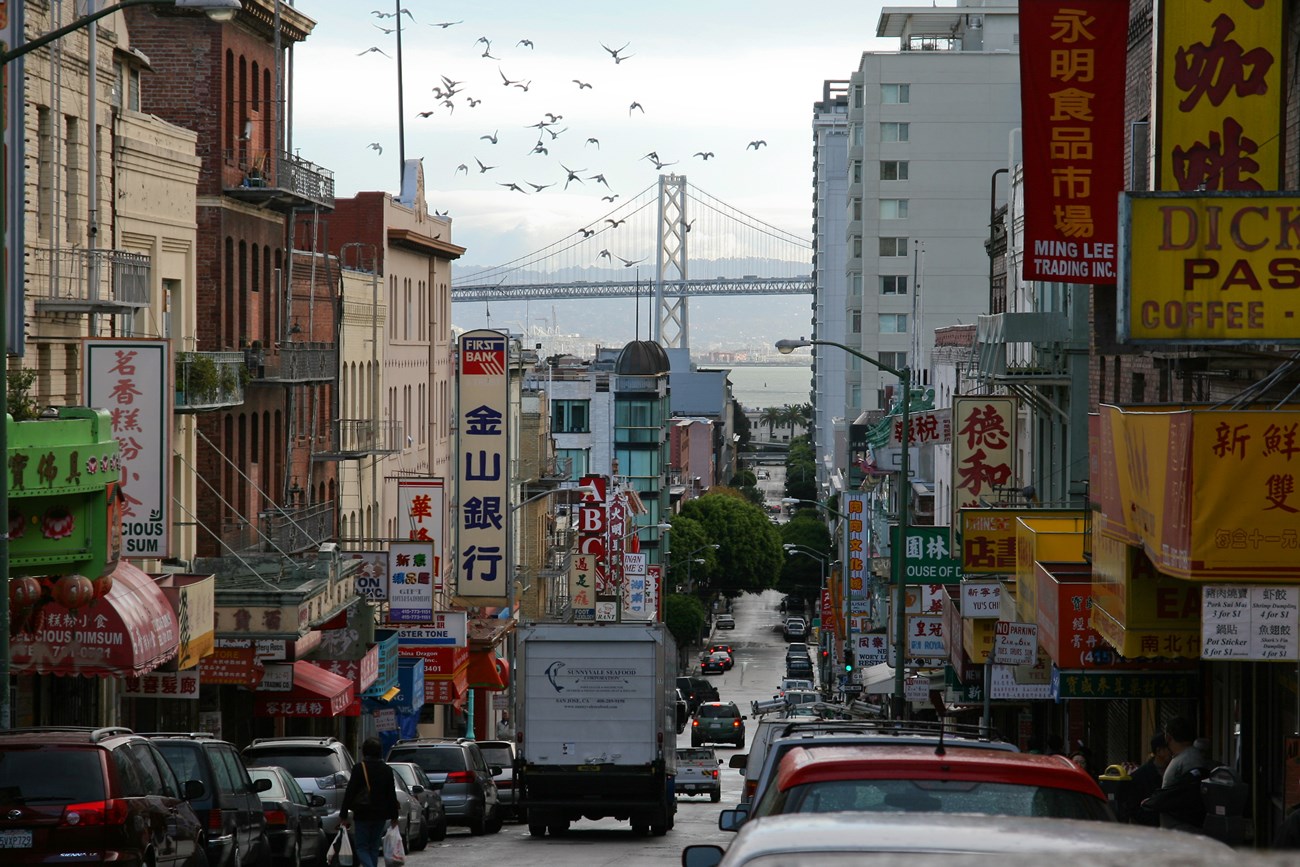Last updated: February 9, 2024
Article
Places of World War II in the San Francisco Bay Area

Photo by Christian Mehlführer, User:Chmehl - Own work, CC BY 3.0, https://commons.wikimedia.org/w/index.php?curid=4332863
World War II dominated the social, economic and political landscapes of the mid-20th century, setting in motion momentous events that still shape the world we live in today. The communities that ring the San Francisco Bay were irrevocably altered by that wartime era and still bear its visible marks in the remains of military bases and coastal defense fortifications, ships and shipbuilding facilities, worker housing and day-care facilities.
Preparations for mobilization to create "Fortress San Francisco" were massive. Forts Baker, Barry, and Cronkhite ringed the tip of Marin County, while Fort Point mounted guard on the Golden Gate Straits. Inside the bay, bases abounded including Fort Mason, the principal Pacific Port of Embarkation, the Presidio, Fort Miley, and Hamilton Army Airfield. The San Francisco Bay Area's major contribution to victory during World War II was shipbuilding. During the war, men and women working in Bay Area shipyards, like Kaiser's Richmond Shipyard Number Three, built 1,400 vessels--a ship a day, on average--like the SS Red Oak Victory. Mare Island Naval Shipyard provided well-established repair and shipbuilding facilities. The converted Richmond Ford Motor Company Assembly Plant prepared tanks for shipment overseas to the Pacific War, and the Benicia Arsenal manufactured the munitions for these and other weapons. During World War II, tens of thousands of Bay Area women challenged common perceptions about their capabilities, and for the first time were faced with the problems of being working parents--finding daycare and housing. These historic places remain today as an indelible imprint of this time and remind us of the dramatic changes brought on by the Bay Area's participation in World War II.
Three months after Pearl Harbor, President Franklin Roosevelt issued Executive Order 9066, ordering more than 110,000 men, women, and children to leave their homes to be detained in remote, military-style camps. In the weeks that followed, local newspapers carried almost daily reports of proclamations, plans and restrictions to civil liberties issued by Lieutenant-General John L. DeWitt out of Building 35 at the Presidio, such as Civilian Exclusion Order No. 20, which required 660 people living in the area bounded by Sutter and California streets and Presidio and Van Ness avenues to report to the Japanese American Citizens League at 2031 Bush Street for registration, and then, on April 29, 1942, for removal. Headlines from the San Francisco News at the time provide a sobering view of the swift expulsion: "General DeWitt Announces Military Exclusion Zones" (March 3); "First Japanese Ready to Leave Coast" (March 19); "Aliens Get One More Night Out" (March 25); "Goodbye! Write Soon!" (April 7). Internees were first transported to one of 13 "Assembly" centers throughout the state, including Tanforan race track in San Bruno--since demolished--where 8,000 Japanese Americans were detained in converted horse stables and makeshift barracks between April and October 1942, then on to permanent camps inland such as Manzanar, which is now a National Historic Site. In all, nearly 100,000 Californians of Japanese descent were removed from their homes and livelihoods for incarceration during the war until 1945.
